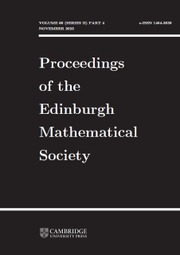Article contents
Reflection of a Wave by a Cylindrical Mirror
Published online by Cambridge University Press: 20 January 2009
Extract
The question of the reflection of a wave by a cylindrical mirror is of interest in a number of fields. It is a problem in which it is difficult to obtain an expression for the reflected or scattered field without recourse to physical assumptions which are sometimes somewhat dubious. An attempt was made by Sommerfeld to solve the problem of a plane wave incident upon such a perfectly conducting mirror by means of what he termed the “Non-Final Determination of Coefficients”. Unfortunately, a close examination of the problem renders it doubtful whether the method can be legitimately employed. It is possible, however, to solve the problem by expressing the scattered field in terms of the currents produced in the mirror, and finding the current generated in the mirror by an arbitrary incident field. The problem which we shall consider is the following two- dimensional one.
Information
- Type
- Research Article
- Information
- Copyright
- Copyright © Edinburgh Mathematical Society 1956
References
1 Sommerfeld, A., Partial Differential Equations in Physics, Ch. I, 29–31 and Ch. IV, 159–162. I have been unable to trace the original paper.Google Scholar
- 4
- Cited by

